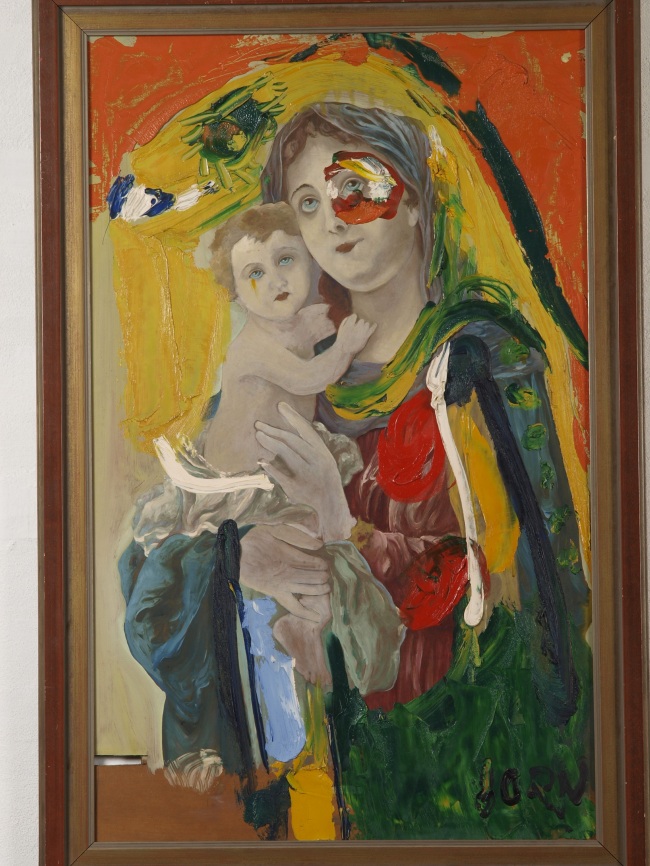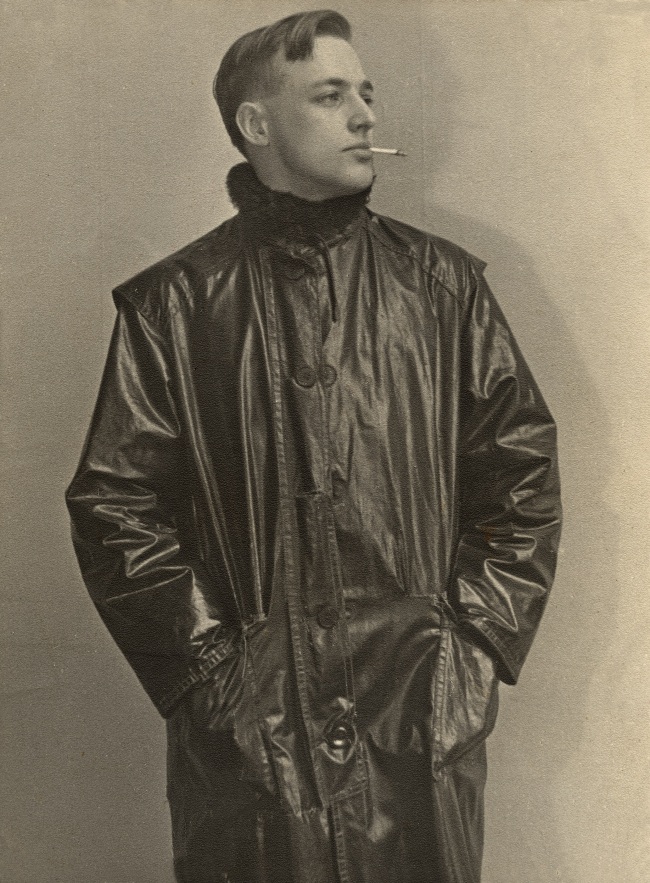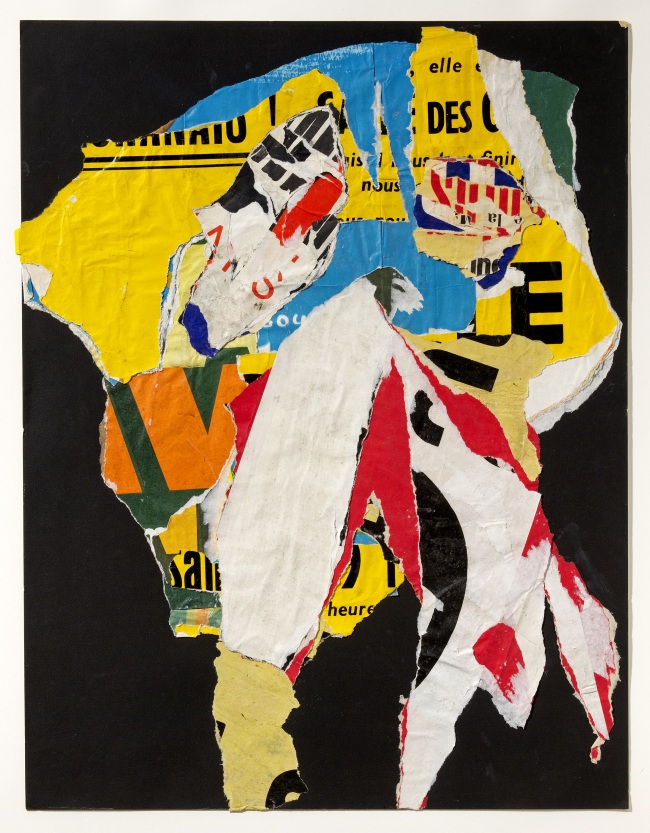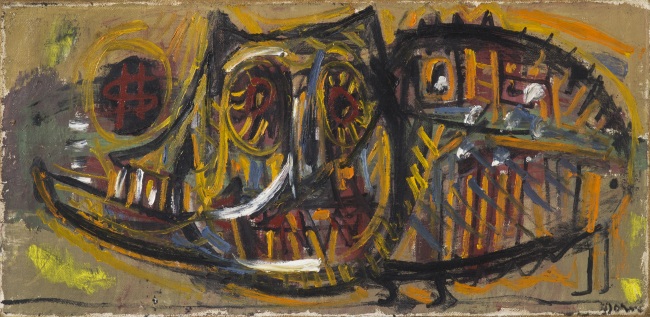Asger Jorn’s avant-garde art practices showcased at MMCA
By Shim Woo-hyunPublished : April 22, 2019 - 17:28
Detournement is a method of painting in which an artist takes an existing artwork and add elements to create something new.
To Danish artist Asger Jorn, a master of the method, however, detournement is also his attitude toward the political, social and cultural circumstances of postwar Europe.
By actively overriding existing artworks with bold and exuberant splashes of paint, Jorn has made new creations. In a way, the artist was devaluing the established form of art but also trying to create new values that would result from the deformation. The voluntary act of recreating was more important than leaving the historical monuments to sit still on a pedestal.
To Danish artist Asger Jorn, a master of the method, however, detournement is also his attitude toward the political, social and cultural circumstances of postwar Europe.
By actively overriding existing artworks with bold and exuberant splashes of paint, Jorn has made new creations. In a way, the artist was devaluing the established form of art but also trying to create new values that would result from the deformation. The voluntary act of recreating was more important than leaving the historical monuments to sit still on a pedestal.

The National Museum of Modern and Contemporary Art is holding an exhibition of works by Jorn, one of the most important Danish artists who led socially engaged art movements such as CoBrA and Situationist International in the 1950s-1960s.
“Alternative Languages-Asger Jorn, the Artist as a Social Activist” has on display some 90 works, including paintings, drawings, photographs, publications, ceramics, textile works and archive materials from the Museum Jorn, in Silkeborg, Denmark.
The first-ever exhibition of Jorn in Asia focuses not just on the stylistic aspects of the works but also the social and political contexts in which he worked and how he responded to the environment with his art.
Jorn is not the best-known artists, partly because he refused to become part of the mainstream European and North American art scenes.

A 1964 telegram, which Jorn sent to Harry Guggenheim after learning that he had been chosen as one of the five winners of the triennial Guggenheim International Award, shows how much he preferred working outside the mainstream art scene.
“Go to hell with your money, Bastard. Refuse prize. Never asked for it. … It is public confirmation not to have participated in your game,” Jorn wrote in the telegram, which is on view at the MMCA’s exhibition. The award carried a $2,500 cash prize.

Jorn, who stood against the encroaching influence of capitalism in the art scene, was an avant-garde throughout his career.
The first section of the MMCA exhibition looks into the paintings in which Jorn started his attempts to break away from conventional painting. The works from the 1930s and 40s show him borrowing painterly idioms of his contemporaries, such as Pablo Picasso and Joan Miro, to create his painting language.
As much as he was opposed to the notion of an artist as a solitary genius and elite, he was a strong advocate for producing collective artworks, such as the ones shown in his collaborations at CoBrA.
Jorn founded art group CoBrA in 1948 with artists from various regions in Europe -- named after the first letters of the cities Copenhagen, Brussels and Amsterdam.

As seen in “The Golden Swine: War Vision,” Jorn and CoBrA found their inspiration in children’s drawings and primitive and ancient images.
A member of the Communist Party of Denmark, Jorn’s artistic oeuvre was also closely tied with his politics. Another well-known art group called Situationist International was where Jorn’s avant-garde continued.
His search for alternative images in Nordic traditions, illustrated in his membership in the Scandinavian Institute for Comparative Vandalism, is traced in another section that shows publications and images he found during his numerous site tours. Shown in the section are publications and images he found during his numerous on-site tours.
A three-sided football game that John devised in 1962, is installed at Seoul Box, the MMCA Seoul branche’s open indoor space.
The exhibition runs through Sept. 8.
By Shim Woo-hyun (ws@heraldcorp.com)


















![[KH Explains] Hyundai's full hybrid edge to pay off amid slow transition to pure EVs](http://res.heraldm.com/phpwas/restmb_idxmake.php?idx=652&simg=/content/image/2024/04/18/20240418050645_0.jpg&u=20240418181020)

![[Today’s K-pop] Zico drops snippet of collaboration with Jennie](http://res.heraldm.com/phpwas/restmb_idxmake.php?idx=642&simg=/content/image/2024/04/18/20240418050702_0.jpg&u=)